Design & Build Quality
The industrial iFi design is right there, but the gold version puts much more bling to the table of course. It’s an incredibly eye-catching little device that overshadows the regular one. However, I think both have an excellent design, though I think they’re a bit large as far as pocketable dongles go.
The devices have lots of LED lights, indicating the volume, sample rate, xBass and xSpace settings. The setup is a bit complex but it’s not difficult to get understand.
GO Bar has an aluminium finish, and the texture and feel are similar to their earlier creations so I guess this is the same material from their other models. The Golden version feels much different with its shiny gold coating. Both are built very well, but the Gold Bar needs some care to prevent many scratches on its surface. GO Bar is safer in that regard.
Speaking of it, the Gold Bar is quite heavy so I doubt anyone would use it outside, at least without any strapping to smartphones. I think of it as more of a laptop companion that you can pull out from your bag and listen to good music in a cosy cafe.
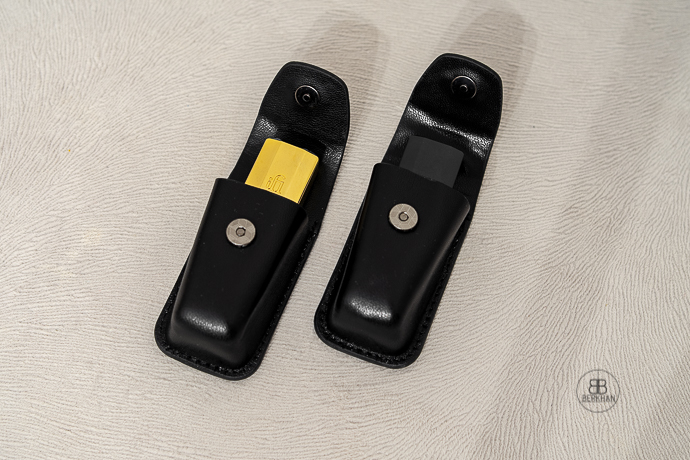
Overall Experience
The GO Bar is simply plug-and-play, whether it’s a smartphone, tablet device or PC. You connect the USB and you’re good to go. The user experience is quite positive but as I mentioned it’s a bit complex to use all the features.
The standard GO Bar’s indicators/writings are a bit difficult to read since they’re printed in grey colour. White could’ve been a better choice in that regard. In addition, the button layout is also a bit complicated. The gold version is easier to read.
Firstly, your current volume level is shown on the LEDs up and down when you’re setting it, but those LEDs are actually for sample rate and other indicators when you’re not setting the volume. Other than volume, there’s the settings button and you use it with different press combinations.
Settings
When you press the setting button once, you open the xBass feature. Another press opens the xSpace and the xBass switches off. A third press opens the xSpace function together with the xBass. So the third press means they’re both on. A fourth press closes them completely.
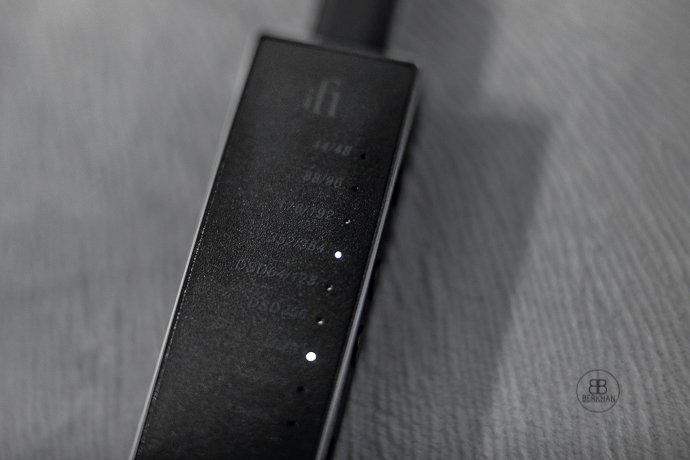
For setting up the digital filter mode, you press the setting button for more than two seconds. Then, you set up the filter using the +/- volume buttons, and each colour represents a different filter:
- The Cyan colour is bit-perfect so there’s no filtering.
- Red is standard, modest filtering.
- Yellow is slow roll-off, minimum phase.
- White is upsampled to 352/384kHz, with minimum filtering.
So these are the settings that you can change on the GO Bar. Additionally, you have iFi’s classic IEMatch feature for 3.5mm and 4.4mm both. This is much simpler, you just use a switch. Overall it’s not a specific device to use, but it’s OK after getting used to it. Also, I never use additional filters or sound-altering settings myself. Even if you do, I guess once you find what you like, you’d leave it as it is.
The device gets reasonably hot under use, but there’s nothing to worry about since it’s a mild warmth.
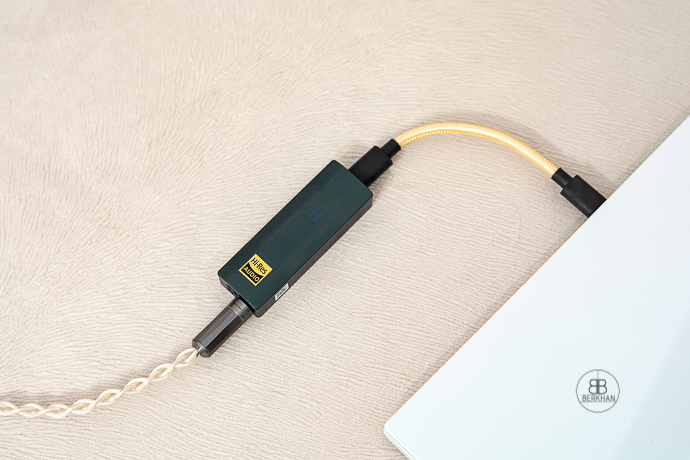
GO Bar Sound
iFi GO Bar has the classic iFi Audio sound in a small footprint. It’s clean sounding with good clarity, resolution and stereo imaging. The unit is a bit dry in the bass and midrange, which is not surprising from a device from iFi Audio. It’s somewhat a bit sterile, light in the bass and mids, and crisp in the treble region.
It does nothing in an aggressive manner though, it’s not too bright, but it’s not muffled or veiled either. It’s a well-balanced and well-controlled device, with excellent background blackness. The sound-stage is reasonably good, with very good imaging and separation.
The bass is a bit light but with very good pace and decay, the midrange is clean with good tonality and clarity, and the treble is crisp with good air and extension. I can also say that the midrange is a bit forward.
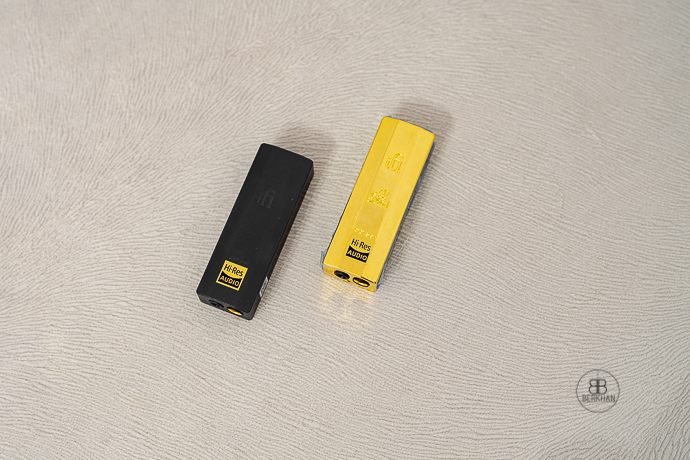
A Reliable USB Dongle
Overall the GO Bar is excellent and gets the job done, and I liked the fact that it has a neutral character in it, letting your connected IEMs/HPs shine through with their flavours. Also, it can blend in with different genres/recordings. If a particular recording is dynamic sounding, you’ll get that dynamism from the GO Bar. If the song is relaxed and laid back, you’ll hear it just as it is. This is a very good trait if you like neutral sounds.





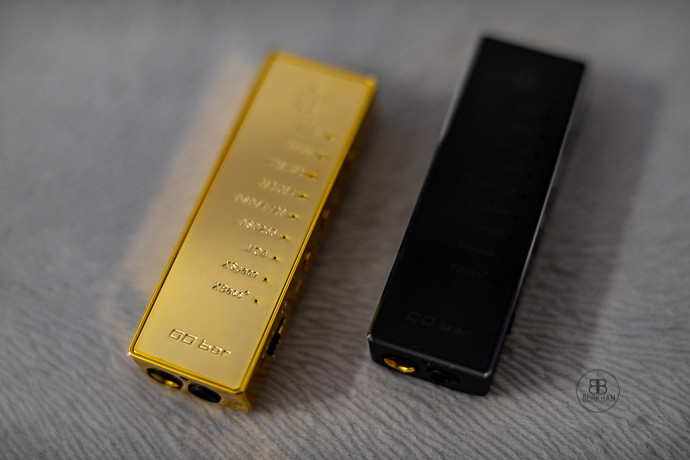
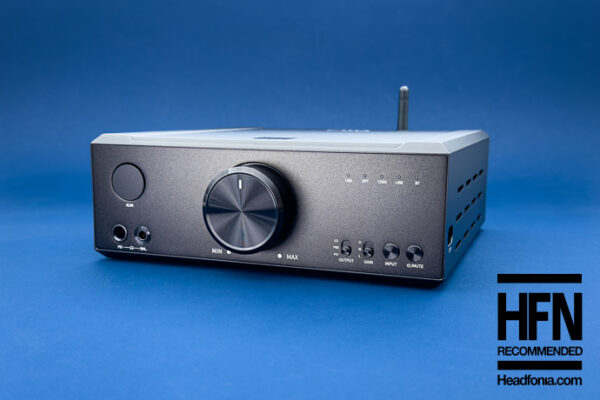
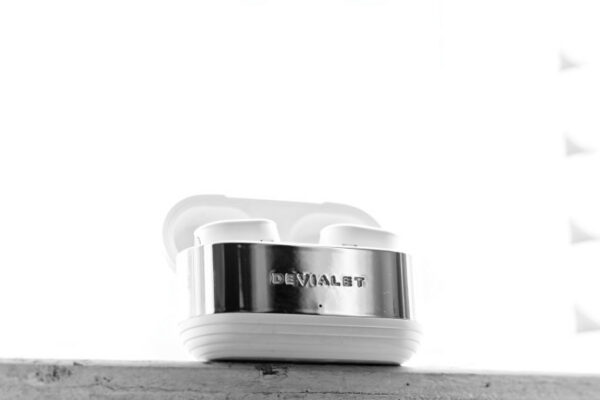
Gregory David
Hmm, you missed a some important volume stuff:
Volume control and gain
To increase volume, press the + button, and to decrease it, press the – button. Volume level is briefly displayed on the GO bar while pressing one of the volume buttons, shown by the number of white LEDs on at a time – from none to 6.
The increase or decrease of volume can be synchronised with the volume of the mobile phone/computer. The connected device will indicate a change of volume on its display if synchronisation is on, and the device’s volume controls can additionally be used to adjust volume. The GO bar’s volume buttons are still operational.
By default, the synchronisation feature is off. To switch this on or off, press the settings button (5) for > 8s. On is indicated by the 6 white LEDs switching on in sequence from LED 1 and 6 to the centre. Off is indicated by the 6 white LEDs switching off in the opposite direction.
Turbo Mode increases the gain by 6dB. To switch this on or off, press the + and – volume buttons together for ≥ 2s. Turbo Mode on is indicated by 2 white LEDs increasing to 6 lighting up at the same time for 2s. Normal gain is indicated by 6 white LEDs diminishing to 2 lighting up for 2s.
Lieven
Hi, thank you for mentioning this. We do know about this, but decided to not include it in the review. We can’t cover every single aspect 🙂
xtvymrdn
The goldbar price is closed to the price of used mojo 1st gen in my country, soundwise how is the gold bar compare to mojo 1stG?
Berkhan
Mojo is a cramped-sounding unit with a bit too much mid-bass, and it’s too warm at times. I think Gold Bar is better in terms of a more balanced and wide presentation.